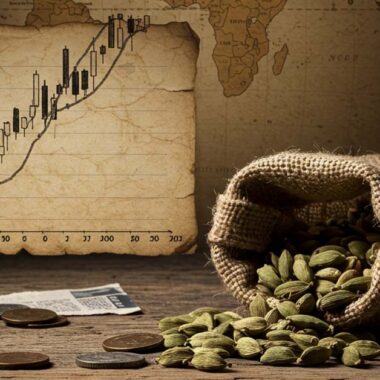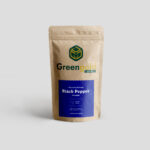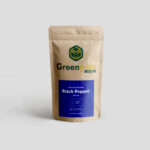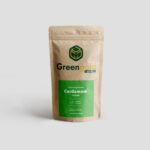Exporting cardamom can be a lucrative business, but it comes with challenges that can impact profitability. From market fluctuations to regulatory barriers, exporters must navigate multiple hurdles. Let’s explore the key challenges and practical solutions to succeed in the global spice trade! 🚀
1️⃣ Strict Quality & Regulatory Standards 📜
Challenge:
Different countries have strict import regulations, including:
✅ Pesticide residue limits (EU & USA have low tolerance)
✅ Fumigation & quarantine requirements 🚫
✅ Organic certification rules 🌱
✅ Packaging & labeling compliance
Solution:
✔️ Conduct lab testing for contaminants before export
✔️ Obtain certifications (USDA Organic, EU Organic, HACCP)
✔️ Use vacuum-sealed & eco-friendly packaging
✔️ Stay updated with import policies of target countries
2️⃣ Price Volatility & Market Fluctuations 📉
Challenge:
🌍 Global supply & demand shifts lead to price instability.
📊 Weather changes, trade policies, and economic factors impact rates.
Solution:
✔️ Track daily cardamom prices 👉 Check here 📊
✔️ Diversify export markets (don’t rely on one country)
✔️ Sign contracts with buyers to lock in prices
✔️ Store cardamom properly to sell at peak prices
3️⃣ High Shipping & Logistics Costs 🚢
Challenge:
💰 Freight charges, customs duties, and warehousing costs reduce profits.
🚨 Delays at ports & supply chain disruptions can affect delivery.
Solution:
✔️ Partner with reliable freight forwarders 🚚
✔️ Use bulk shipping for cost savings 📦
✔️ Negotiate lower rates with shipping companies
✔️ Choose air freight for urgent, high-value shipments
4️⃣ Competition from Other Exporting Countries 🌍
Challenge:
🇮🇳 India & 🇬🇹 Guatemala dominate the cardamom market.
🚀 Large exporters have better supply chains & pricing power.
Solution:
✔️ Differentiate with premium organic quality 🌱
✔️ Target niche markets (specialty tea, gourmet spices, organic stores)
✔️ Build brand trust with farm-to-table storytelling 🏡
✔️ Offer competitive pricing & bulk deals
5️⃣ Payment & Financial Risks 💰
Challenge:
🚨 Risk of non-payment from international buyers.
🏦 Foreign exchange fluctuations affect profit margins.
Solution:
✔️ Use secure payment methods (Letter of Credit, escrow services)
✔️ Work with export insurance to protect against default
✔️ Price products in stable currencies (USD, EUR)
✔️ Have contracts & legal agreements in place
6️⃣ Finding Reliable Buyers & Market Access 🌎
Challenge:
🛑 Many exporters struggle to find direct buyers.
🤝 Middlemen take a cut of profits.
Solution:
✔️ List on global B2B platforms (Alibaba, TradeIndia, IndiaMART)
✔️ Attend international spice trade fairs 🌿
✔️ Build a strong website & social media presence
✔️ Join export promotion councils (Spices Board of India)
7️⃣ Storage & Shelf-Life Management 🏪
Challenge:
🌡️ Cardamom loses aroma & flavor if not stored properly.
🐜 Moisture & pests can spoil stock before shipment.
Solution:
✔️ Store in airtight, cool, dry conditions
✔️ Use vacuum sealing for long shelf life
✔️ Follow best post-harvest processing methods
✔️ Avoid plastic bags – use eco-friendly, breathable materials
🚀 Final Thoughts: Winning the Export Game!
Exporting cardamom is challenging, but with smart strategies, you can maximize success! 🌿💰
✔️ Follow quality standards 📜
✔️ Monitor global prices & markets 📊
✔️ Optimize shipping & logistics 🚚
✔️ Find direct buyers & reduce middlemen 🤝
👉 Want high-quality cardamom? Buy from Greengold Guide! 🌱✨












